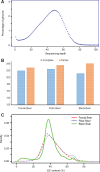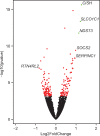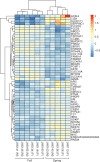Genome assembly and gene expression in the American black bear provides new insights into the renal response to hibernation
- PMID: 30395234
- PMCID: PMC6379037
- DOI: 10.1093/dnares/dsy036
Genome assembly and gene expression in the American black bear provides new insights into the renal response to hibernation
Abstract
The prevalence of chronic kidney disease (CKD) is rising worldwide and 10-15% of the global population currently suffers from CKD and its complications. Given the increasing prevalence of CKD there is an urgent need to find novel treatment options. The American black bear (Ursus americanus) copes with months of lowered kidney function and metabolism during hibernation without the devastating effects on metabolism and other consequences observed in humans. In a biomimetic approach to better understand kidney adaptations and physiology in hibernating black bears, we established a high-quality genome assembly. Subsequent RNA-Seq analysis of kidneys comparing gene expression profiles in black bears entering (late fall) and emerging (early spring) from hibernation identified 169 protein-coding genes that were differentially expressed. Of these, 101 genes were downregulated and 68 genes were upregulated after hibernation. Fold changes ranged from 1.8-fold downregulation (RTN4RL2) to 2.4-fold upregulation (CISH). Most notable was the upregulation of cytokine suppression genes (SOCS2, CISH, and SERPINC1) and the lack of increased expression of cytokines and genes involved in inflammation. The identification of these differences in gene expression in the black bear kidney may provide new insights in the prevention and treatment of CKD.
Keywords: RNA-Seq; black bear; genome assembly; hibernation; kidney.
© The Author(s) 2018. Published by Oxford University Press on behalf of Kazusa DNA Research Institute.
Figures





References
-
- Levin A., Tonelli M., Bonventre J., et al.2017, Global kidney health 2017 and beyond: a roadmap for closing gaps in care, research, and policy, Lancet, 390, 1888–917. - PubMed
-
- Stenvinkel P., Johnson R.J.. 2013, Kidney biomimicry—a rediscovered scientific field that could provide hope to patients with kidney disease, Arch. Med. Res., 44, 584–90. - PubMed
-
- Tøien Ø., Blake J., Edgar D.M., Grahn D.A., Heller H.C., Barnes B.M.. 2011, Hibernation in black bears: independence of metabolic suppression from body temperature, Science, 331, 906–9. - PubMed
-
- Hellgren E.C. 1998, Physiology of hibernation in bears, Ursus, 10, 467–77.
-
- Nelson R.A., Wahner H.W., Jones J.D., Ellefson R.D., Zollman P.E.. 1973, Metabolism of bears before, during, and after winter sleep, Am. J. Physiol., 224, 491–6. - PubMed
MeSH terms
Substances
Grants and funding
LinkOut - more resources
Full Text Sources
Miscellaneous

